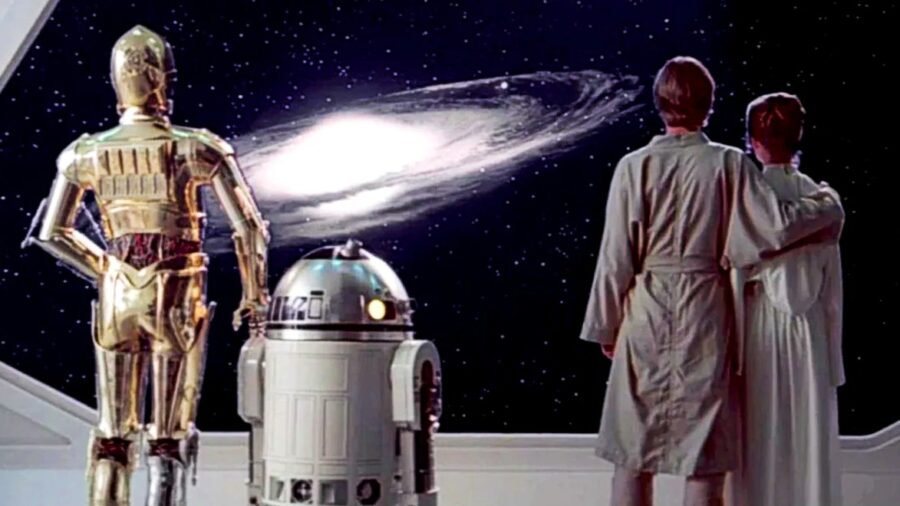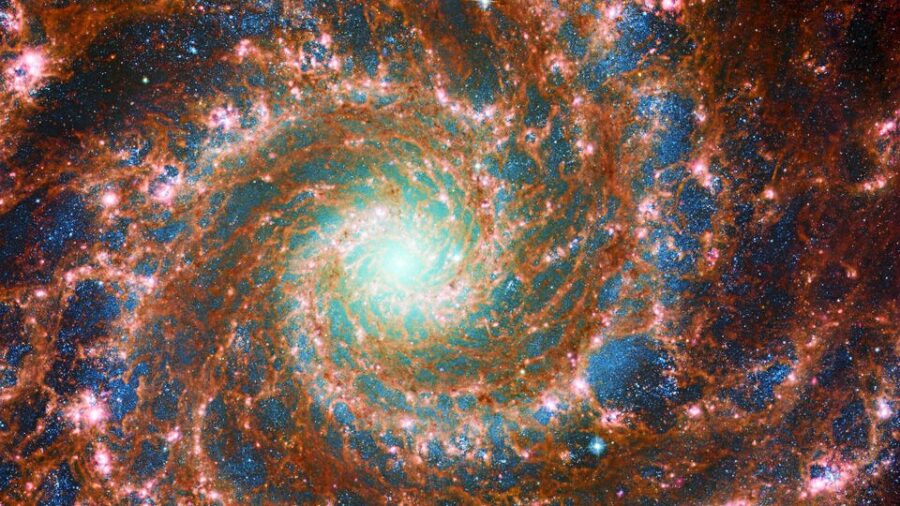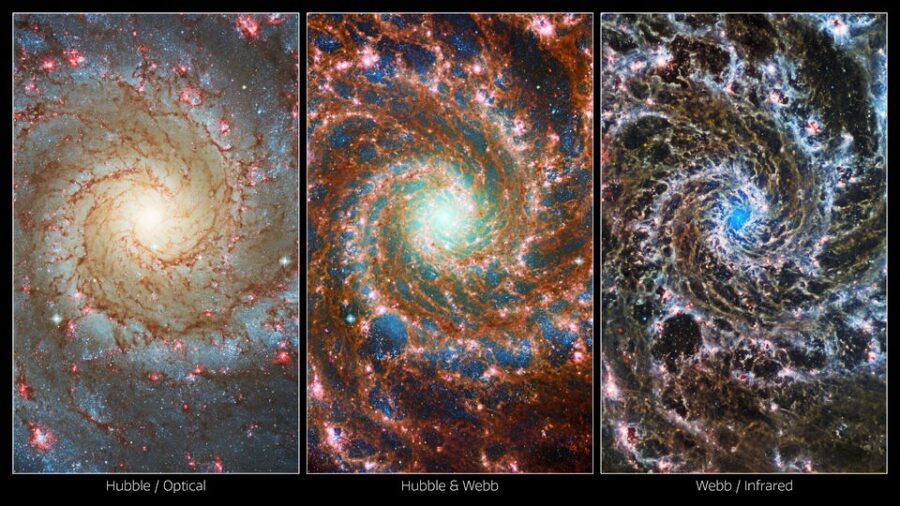See The Phantom Galaxy In Jaw-Dropping New NASA Photos
NASA has managed to take these breathtaking pictures of a phantom galaxy and our minds are cosmically blown.

Space may be the final frontier, but with the help of incredible new technologies including those of the dazzling Hubble Space Telescope and stunning James Webb Space Telescope, those of us positioned permanently on Earth are getting peeks at what lies beyond the furthest reaches of space. In photos recently taken by the pair of scopes, those of us intrigued by what’s out there are having our minds blown by shots of never before seen stars and even galaxies. Some of the most bewildering of the images taken have been those of the brilliant Phantom Galaxy, also known as M74. Referred to as a “grand design spiral,” the pictures, which you can see below, absolutely live up to the Phantom’s description.

The main image of the Phantom Galaxy puts its vibrant, incredibly symmetrical spiral on display. Reds, blues, greens, and black spin together and around one another into the bright light emanating from the galaxy’s core. Gas and dust combine with one another to make M74 a magnificent sight to behold.

Also provided with the main Hubble and Webb shots are two different Hubble versions: optical and infrared. The optical view features more red light coming from the stars and planets spinning around the outer reaches of the galaxy. The Phantom Galaxy’s gasses and dust can be better seen here as they support a dark backdrop to make the brightness of the stars and planets pop. Lacking more color than the other two images, the Hubble infrared depicts the galaxy’s core as a bright and vibrant blue. The red of the planets and stars are perfectly on display as they clash against the white, gray, and black of the galaxy’s perfectly formed arms.
Tumbling through the cosmos in the constellation Pisces, the Phantom Galaxy is doing its gorgeous thing an unbelievable 32 million light-years away. Not only are the galaxy’s beaming arms a major draw to astronomers looking to gain more of a perspective of what secrets M74 holds, but because of its position, which is nearly directly in line with Earth, it makes the cosmic wonder an easy choice for those scientists to focus on.
Both the Hubble Telescope and James Webb Telescope bring a different perspective of the Phantom Galaxy to help scientists better understand the complexity of the galaxy’s symmetrical spiral. The Webb allows astronomers to view their subject at longer wavelengths which better helps them locate clusters of stars swirling around the galaxy as well as the dust that surrounds it. Meanwhile, the Hubble is able to zero in on HII regions, which put some of the brilliantly colorful star formations on full display. With their powers combined, each telescope does a terrific job in helping astronomers better understand this picture-perfect grand design spiral galaxy.
In recent weeks, the James Webb Telescope has been taking center stage in providing us with a close-up look at what exactly is floating around out there. From the first snaps back in July to more recent shots of planets like Jupiter, there seems to be nothing the high-powered telescope can’t get beautiful pictures of. With the latest images of the Phantom Galaxy, it seems like space-obsessed folks have a whole lot more to look forward to in the days to come.












